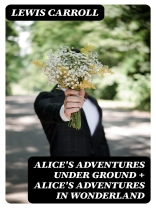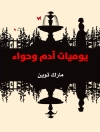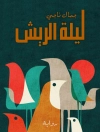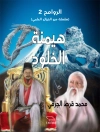In ’Alice’s Adventures Under Ground’ and its expanded version, ’Alice’s Adventures in Wonderland, ’ Lewis Carroll crafts a whimsical yet profound exploration of the imagination, society, and the fluidity of identity. This narrative, peppered with nonsensical dialogues and quirky characters, reflects the Victorian era’s fascination with childhood innocence juxtaposed with the complexities of adult realities. Carroll’s playful use of language, riddles, and dreamlike sequences creates a rich tapestry that invites readers of all ages to delve into the realms of absurdity and logic, ultimately prompting reflection on the nature of reality and consciousness. Charles Lutwidge Dodgson, known by his pen name Lewis Carroll, was a mathematician, logician, and photographer. His deep engagement with mathematics and penchant for wordplay significantly informed his literary style. Inspired by a boating trip with the Liddell sisters, the original tale emerged as a whimsical narrative tailored for young Alice Liddell, encapsulating Carroll’s longing for the simplicity and wonder of childhood while subtly critiquing the conventions of Victorian society. I wholeheartedly recommend this enchanting work to anyone seeking to rediscover the innocence of youth through the eyes of a curious child. Carroll’s ability to blend fantasy with intellectual depth makes this a timeless classic that continues to resonate, challenging readers to embrace their imaginations while questioning social norms.
Om författaren
Lewis Carroll, the celebrated Victorian-era author renowned for his playful use of language and fantasy, was born Charles Lutwidge Dodgson on January 27, 1832, in Daresbury, Cheshire, England. An accomplished mathematician and logician, Carroll taught at Christ Church, Oxford, where his pioneering spirit in both literature and mathematics left a profound legacy. He is best known for ’Alice’s Adventures in Wonderland’ (1865), a seminal work that has shaped children’s literature, and its less-known precursor, ’Alice’s Adventures Under Ground’ (1886). Carroll’s writing is characterized by its witty wordplay, surreal characters, and subversion of logic, which has intrigued readers and critics alike. His creative genius produced a narrative structure that reflected his mathematical interests, as well as a penchant for satirizing social conventions of his time. Carroll’s influence extends beyond literature into various aspects of art and popular culture, making him one of the most referenced authors in the western literary canon. Although his life was surrounded by controversy, including speculation about his relationships with young girls, his work continues to be celebrated for its imaginative brilliance and whimsical charm.












